Technologies
Pixel 7 vs. Pixel 7A: Google’s Cheaper Phone Is the Winner
Google’s new $499 phone packs the Pixel 7 experience in a slightly smaller and more affordable package.
Each new generation of Google’s Pixel A-series phones comes with fewer compromises than the last. That’s truer than ever with the Pixel 7A, which costs $499 and bears striking similarity to the $599 Pixel 7. After reviewing both phones, I’m convinced the Pixel 7A is the best value for most people.
Both phones run on Google’s Tensor G2 processor, meaning you’ll get essentially the same performance and very similar photography and language translation features on both devices.
Advertiser Disclosure
The biggest area in which they differ on paper comes down to their cameras and their size, although in practice I could barely tell the difference between photos taken on both devices.
The only major reason to choose the Pixel 7 over the 7A is if you prefer having a slightly larger screen and can find it at a discount that brings it closer to the 7A in price. Here’s a closer look at how the two phones compare after testing them both.
Pixel 7 vs. Pixel 7A: Cameras
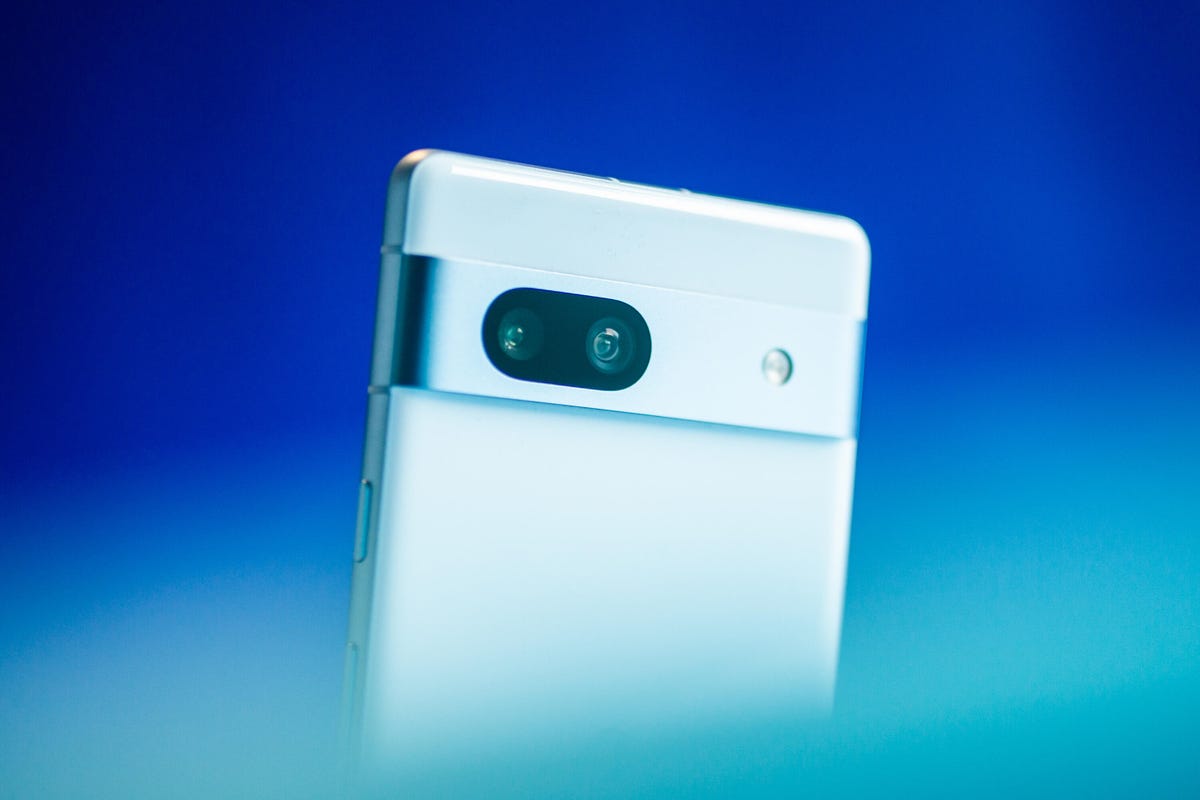
The Pixel 7A’s camera (pictured) is very similar to the Pixel 7’s.
Looking at the camera specifications, you may think the Pixel 7A has the superior setup. It has a 64-megapixel main camera, while the Pixel 7’s primary shooter has a 50-megapixel sensor. The 7A also has a 13-megapixel ultrawide compared to the Pixel 7, which has a 12-megapixel one.
But resolution isn’t everything when it comes to taking a great photo. Google says the Pixel 7’s camera sensor is larger and more light sensitive, which should result in better overall image quality. When comparing the two, I couldn’t really tell the difference. Both phones take excellent photos with vibrant color and crisp details. If you’re a casual photographer and just want a reliable camera for taking great photos of friends, family, vacations and pets, the Pixel 7A is more than enough.
Take a look at some photo samples below.
Since both phones have the same processor, they also share many of the same photo-editing and shooting features. That includes night mode, portrait mode, Face Unblur, Photo Unblur, Magic Eraser and Real Tone, Google’s tech for rendering skin tones more accurately. They can also both zoom digitally up to 8x.
The cheaper Pixel 7A lacks Action Pan, which is present on the Pixel 7 and captures a moving subject sharply while blurring the background. Both phones have Long Exposure mode, though, which does the opposite by applying an action blur effect to a moving subject.
The Pixel 7 and 7A also take relatively bright photos in dim environments, too, as shown below. However, on one occasion, the Pixel 7 was able to focus more sharply on the subject when taking photos in low light.
Even though the Pixel 7A technically has a higher resolution front camera, I thought selfies from both devices generally looked equally good.
The bottom line: The Pixel 7A and Pixel 7 both have very similar cameras. The Pixel 7A doesn’t have Google’s Action Pan feature, but you’re not missing much else.
Pixel 7 vs. Pixel 7A: Size and design
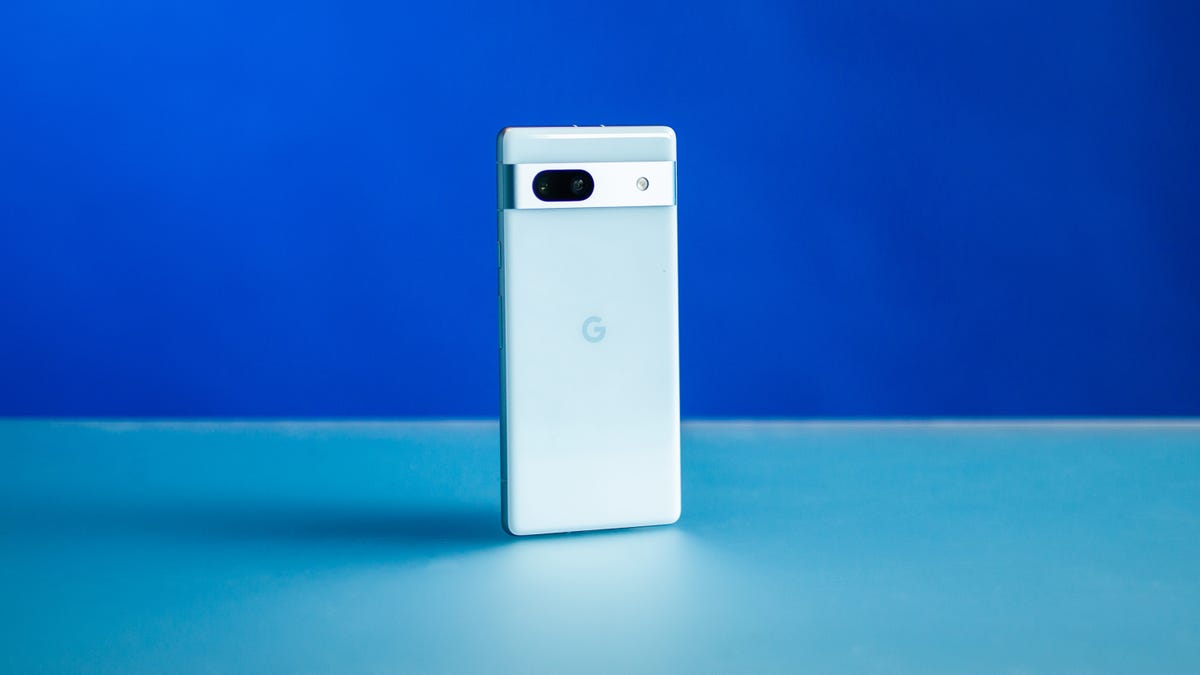
The Pixel 7A
The Pixel 7A inherits the Pixel 7’s design language, from its metallic camera bar to its matte edges. The main differences between the two devices come down to size and color options. The Pixel 7A has a 6.1-inch screen, which might be preferable if you like smaller devices. The Pixel 7 has a 6.3-inch screen, providing a bit more space for those who like to read and watch videos on their phones.
Both devices can increase their screen’s refresh rate up to 90Hz when needed to make animations and scrolling look smoother, and they both have the same resolution at 1,080×2,400 pixels.
However, both screens look dim in bright sunlight; I had to boost the brightness to the max when outdoors.
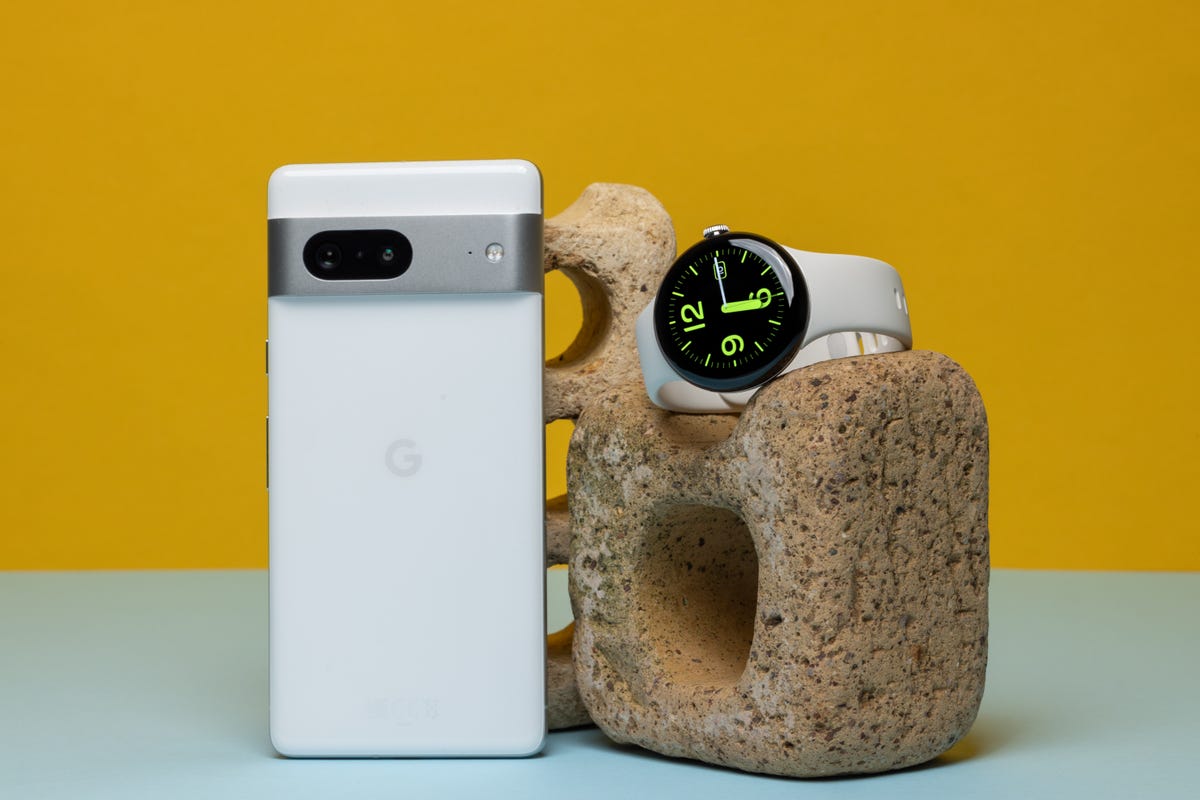
The Pixel 7 is pictured next to the Pixel Watch.
In terms of color choices, the Pixel 7A is available in coral (orange), sea (light blue), charcoal (grayish) and snow (white). The Pixel 7, on the other hand, comes in lemongrass (light yellow), snow (white) and obsidian (black).
There’s also a slight difference between the two phones when it comes to durability. The Pixel 7A is rated for IP67 dust and water resistance, while the Pixel 7 has an IP86 rating. While both phones are dust-tight, the Pixel 7A is only rated to withstand the effects of temporary immersion in water, while the Pixel 7 can endure continuous immersion in water.
Pixel 7 vs. Pixel 7A: Battery life and performance
Since they run on the same Tensor G2 processor and have the same amount of memory, performance is similar between the two. Launching apps, scrolling around the operating system and switching between apps and playing games felt smooth on both devices. They also scored similarly on benchmarks meant to test general performance and graphics, as shown below. (Note: Geekbench 6, the performance test, evaluates the performance of a processor’s single core in addition to how multiple cores perform together, as shown in the table).
Pixel 7A vs. Pixel 7
- Geekbench 6 Single Core
- Geekbench 6 Multicore
- 3DMark Wildlife Extreme
I generally got around a day of battery life out of both, although for you it may vary depending on your phone’s settings and which apps you’re using. In addition to using the devices as my personal phone when I reviewed them, I ran two battery tests: a 45-minute endurance test to see how much battery life is drained after tasks like making a video call, playing games and streaming video, and a three-hour test that involves streaming a YouTube video and measuring the battery percentage at each hour mark.
The Pixel 7 won the 45-minute endurance test since it had 94% of its battery remaining versus the Pixel 7A’s 92%. But the Pixel 7A outperformed the Pixel 7 on the three-hour drain test, although the two were close. All told, battery life is similar between the two devices.
Pixel 7A vs. Pixel 7 Battery Test
| Pixel 7A | Pixel 7 | |
| 1 Hour | 96% | 95% |
| 2 Hour | 90% | 88% |
| 3 Hour | 85% | 81% |
Still, the Pixel 7 does charge slightly faster than the Pixel 7A, given that the former supports 18W charging while the latter supports 20W. In practice, the Pixel 7 went from 20% to 64% after 30 minutes of charging, while the Pixel 7A went from 20% to 58%. (Note: for this test, I used a non-Google 45-watt power adapter and the USB-C cable that came with each phone). Both phones also support wireless charging, which is notable considering the Pixel 6A lacked this functionality.
Pixel 7 vs. Pixel 7A: Software and support
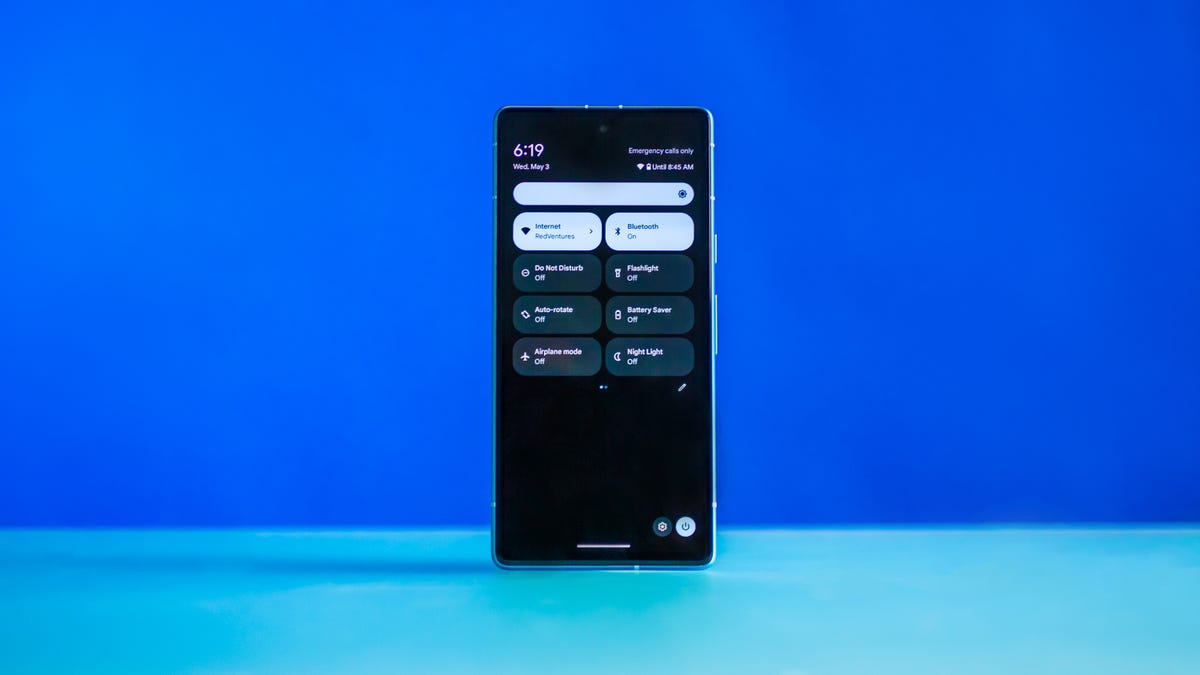
The Pixel 7A (pictured) and Pixel 7 will likely both get Android 14 before other non-Pixel devices.
Google provides a very similar software experience for the Pixel 7 and Pixel 7A. Both devices run Android 13 and will likely be among the first to be upgraded to Android 14 since they’re Pixel devices.
You also get Google’s Pixel-specific features like the Recorder app, its suite of phone call tools that let Google wait on hold for you and transcribe automated menus and Google’s free VPN. Google also regularly releases minor software updates for Pixel phones called «feature drops» that introduce new additions throughout the year. Both devices offer the same biometric authentication options for unlocking your phone: face unlock and fingerprint scanning.
But of the two phones, only the Pixel 7 supports spatial audio, which essentially creates the effect of surround sound in your headphones. When testing this feature while watching Stranger Things, I noticed the sounds of cars zooming by or insects chirping had a bit more movement and depth on the Pixel 7 compared to the Pixel 7A.
The Pixel 7 and 7A will each get at least three years of Android version updates and five years of security updates. That means you can expect the Pixel 7 to get Android version updates up to October 2025, while the Pixel 7A will likely receive Android OS upgrades until May 2026.
Pixel 7 vs. Pixel 7A: Which should you buy?
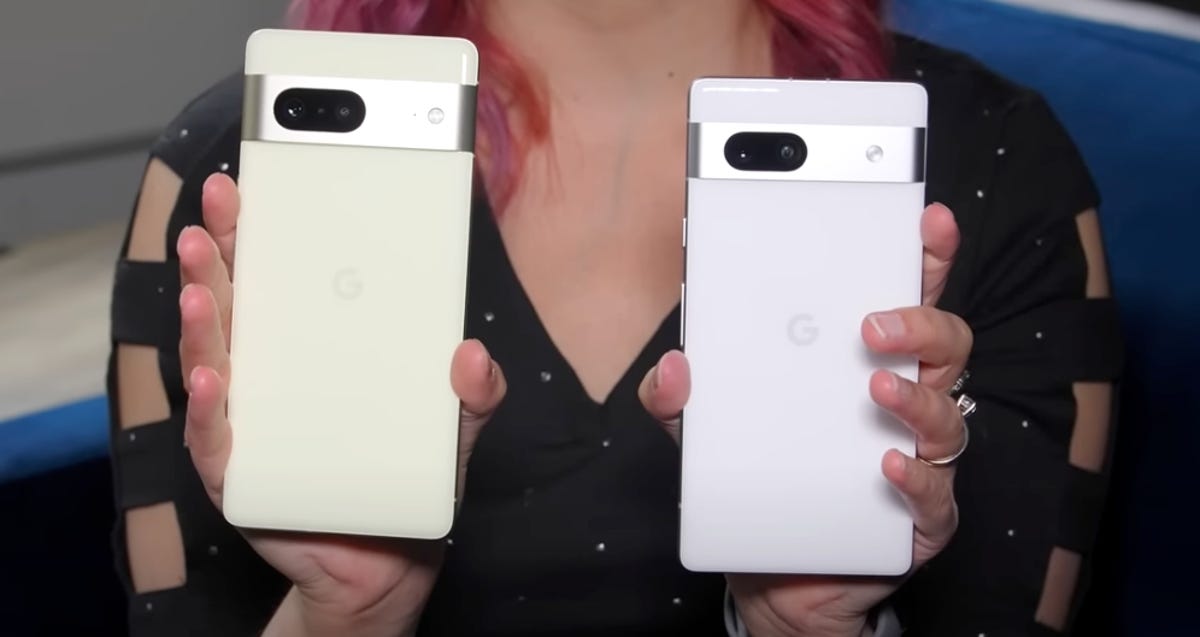
The Pixel 7 (left) and Pixel 7A (right)
The Pixel 7A is the best overall choice for most people because it provides a very similar experience as the Pixel 7 for $100 less. You’ll get a few extras with the Pixel 7, but none that feel like deal-breakers.
These include a slightly larger screen, charging that’s a bit faster than the Pixel 7A’s, the Action Pan photography feature, spatial audio and a higher protection rating against water submersion. Even though the camera specifications differ between the two devices, both phones capture impressive photos that are more than adequate for casual photographers.
With the Pixel 7A, Google further closed the gap between its flagship Pixel device and its budget-friendly option. For that reason, I’m hoping to see more from the Pixel 8.
Google Pixel 7A vs. Pixel 7 Specs
| Google Pixel 7A | Google Pixel 7 | |
| Display size, tech, resolution, refresh rate | 6.1-inch OLED; FHD+; up to 90Hz refresh rate | 6.3-inch OLED; FHD+; up to 90Hz refresh rate |
| Dimensions (inches) | 6 x 2.9 x 0.35 in. | 6.1 x 2.9 x 0.34 in. |
| Dimensions (millimeters) | 152.4 x 72.9 x 9 mm | 155.6 x 73.2 x 8.7 mm |
| Weight (grams, ounces) | 193g; 6.8oz. | 197g; 6.9oz. |
| Mobile software (at launch) | Android 13 | Android 13 |
| Camera | 64MP main; 13MP ultrawide | 50MP main; 12MP ultrawide |
| Front-facing camera | 13MP | 10.8MP |
| Video capture | 4K at 60 FPS | 4K at 60 FPS |
| Processor | Google Tensor G2 | Google Tensor G2 |
| RAM/storage | 128GB + 8GB | 128GB + 8GB |
| Expandable storage | None | None |
| Battery | 4,385-mAh; wireless charging | 4,355-mAh; wireless charging |
| Fingerprint sensor | Yes (under screen) | Yes (under screen) |
| Face unlock | Yes | Yes |
| Connector | USB-C | USB-C |
| Headphone jack | None | None |
| Special features | Magic Eraser, Real Tone, Photo Unblur, Face Unblur, Long Exposure Mode, Hold For Me, Wait Times, Direct My Call Live Translate, | Magic Eraser, Photo Unblur, Real Tone, Face Unblur, Long Exposure Mode, Action Pan; Hold For Me, Wait Times, Direct My Call Live Translate, |
| US price off-contract | $499 ($549 for mmWave) | $599 |
| UK price | £449 | £599 |
| Australia price | AU$749 | AU$999 |
Google’s budget phone took a leap forward in 2023 with the Pixel 7A, which offers many of the same benefits as the Pixel 7 but at a cheaper price. Like the Pixel 7, the Pixel 7A runs on Google’s Tensor G2 processor, meaning it has many of the same photo editing and language translation features as its pricier sibling. The Pixel 7A’s 64-megapixel camera also takes excellent photos that rival the Pixel 7’s in quality.
While we still like the Pixel 7, the Pixel 7A’s lower price makes it a better deal for most people. Only opt for the Pixel 7 if you really want a slightly larger screen and are willing to pay the extra $100 for it. Otherwise, the main differences between the Pixel 7 and 7A come down to the former’s more durable build, slightly faster charging and its ability to wirelessly charge compatible accessories. The Pixel 7 also has a larger camera sensor that’s more sensitive to light, according to Google, but CNET’s Lisa Eadicicco didn’t notice much of a difference.
Google’s flagship phone has a solid 50-megapixel camera, a 6.3-inch screen and Google’s Tensor G2 processor. While we generally recommend the Pixel 7A since it’s $100 cheaper and offers a similar experience, the Pixel 7 is still a great choice for those in need of a relatively affordable Android phone with a larger screen.
Technologies
Today’s NYT Strands Hints, Answers and Help for Jan. 8 #676
Here are hints and answers for the NYT Strands puzzle for Jan. 8, No. 676.
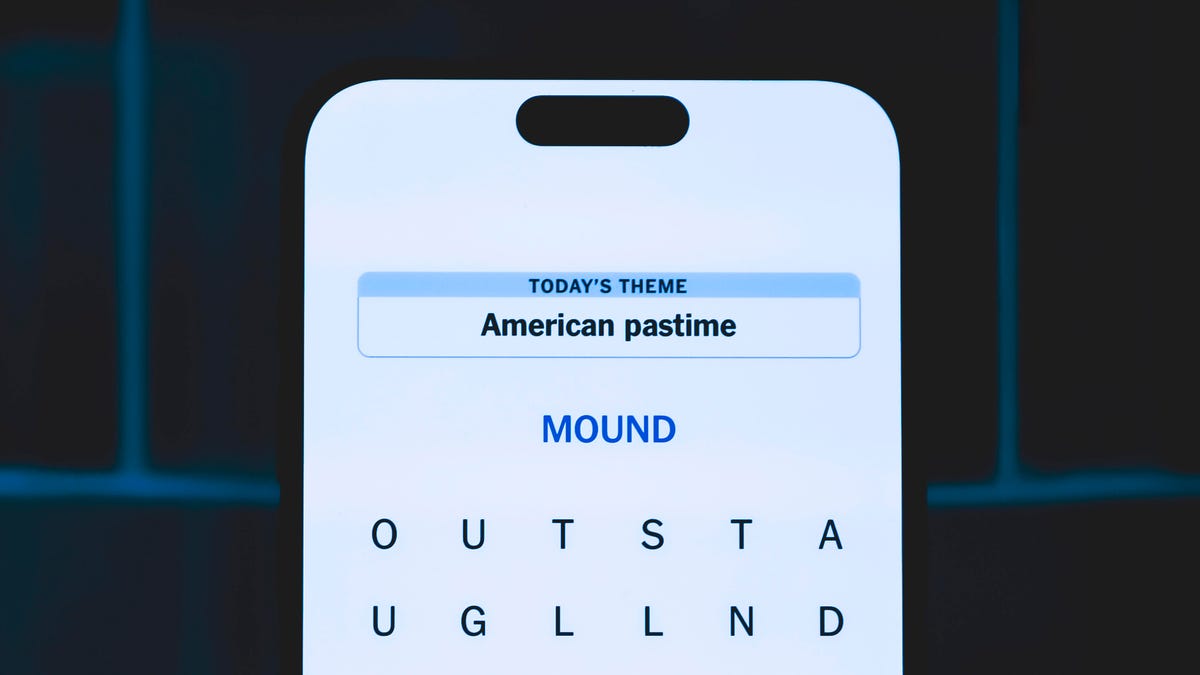
Looking for the most recent Strands answer? Click here for our daily Strands hints, as well as our daily answers and hints for The New York Times Mini Crossword, Wordle, Connections and Connections: Sports Edition puzzles.
Today’s NYT Strands puzzle was almost impossible for me, because it’s all focused on a certain TV show that I have never watched and barely know anything about. (Its fourth season premieres today, if you want to check it out.) If you’re like me, you need hints and answers, so read on.
I go into depth about the rules for Strands in this story.
If you’re looking for today’s Wordle, Connections and Mini Crossword answers, you can visit CNET’s NYT puzzle hints page
Hint for today’s Strands puzzle
Today’s Strands theme is: That’s just reality (TV)
If that doesn’t help you, here’s a clue: Show with plenty of trickery.
Clue words to unlock in-game hints
Your goal is to find hidden words that fit the puzzle’s theme. If you’re stuck, find any words you can. Every time you find three words of four letters or more, Strands will reveal one of the theme words. These are the words I used to get those hints but any words of four or more letters that you find will work:
- SIDE, HIDE, START, TART, FAITH, TENS, BANS, FATE, SILT, CAST, TRAIT
Answers for today’s Strands puzzle
These are the answers that tie into the theme. The goal of the puzzle is to find them all, including the spangram, a theme word that reaches from one side of the puzzle to the other. When you have all of them (I originally thought there were always eight but learned that the number can vary), every letter on the board will be used. Here are the nonspangram answers:
- CASTLE, SHIELD, MISSION, FAITHFUL, BANISHMENT
Today’s Strands spangram
Today’s Strands spangram is THETRAITORS. To find it, start with the T that’s three letters down on the far-left row, and wind across and then down.
Don’t miss any of our unbiased tech content and lab-based reviews. Add CNET as a preferred Google source.
Technologies
Today’s NYT Connections: Sports Edition Hints and Answers for Jan. 8, #472
Here are hints and the answers for the NYT Connections: Sports Edition puzzle for Jan. 8, No. 472.
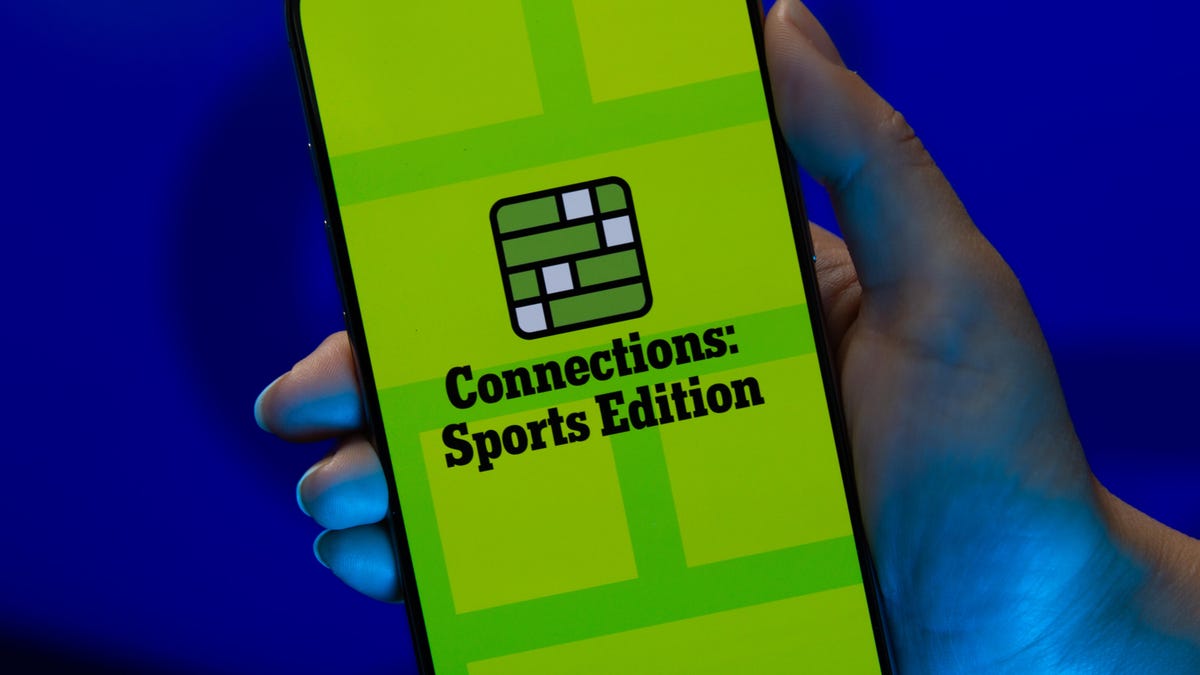
Looking for the most recent regular Connections answers? Click here for today’s Connections hints, as well as our daily answers and hints for The New York Times Mini Crossword, Wordle and Strands puzzles.
Today’s Connections: Sports Edition was a bit of a stumper, though if you recognize famous-athlete names, you might get the purple category right away. And you might have never heard of the blue category topic. (That link is a big spoiler.) If you’re struggling with today’s puzzle but still want to solve it, read on for hints and the answers.
Connections: Sports Edition is published by The Athletic, the subscription-based sports journalism site owned by The Times. It doesn’t appear in the NYT Games app, but it does in The Athletic’s own app. Or you can play it for free online.
Read more: NYT Connections: Sports Edition Puzzle Comes Out of Beta
Hints for today’s Connections: Sports Edition groups
Here are four hints for the groupings in today’s Connections: Sports Edition puzzle, ranked from the easiest yellow group to the tough (and sometimes bizarre) purple group.
Yellow group hint: Sports in our nation’s capital.
Green group hint: Got any Band-Aids?
Blue group hint: Certain basketball league.
Purple group hint: Same first name.
Answers for today’s Connections: Sports Edition groups
Yellow group: A DC athlete.
Green group: Supplies for an athletic trainer.
Blue group: Unrivaled teams.
Purple group: Jerry ____.
Read more: Wordle Cheat Sheet: Here Are the Most Popular Letters Used in English Words
What are today’s Connections: Sports Edition answers?
The yellow words in today’s Connections
The theme is a DC athlete. The four answers are Capital, Commander, Mystic and Wizard.
The green words in today’s Connections
The theme is supplies for an athletic trainer. The four answers are bandages, ice pack, scissors and tape.
The blue words in today’s Connections
The theme is Unrivaled teams. The four answers are Breeze, Laces, Phantom and Vinyl.
The purple words in today’s Connections
The theme is Jerry ____. The four answers are Lucas, Rice, Stackhouse and West.
Don’t miss any of our unbiased tech content and lab-based reviews. Add CNET as a preferred Google source.
Technologies
Today’s NYT Mini Crossword Answers for Thursday, Jan. 8
Here are the answers for The New York Times Mini Crossword for Jan. 8.
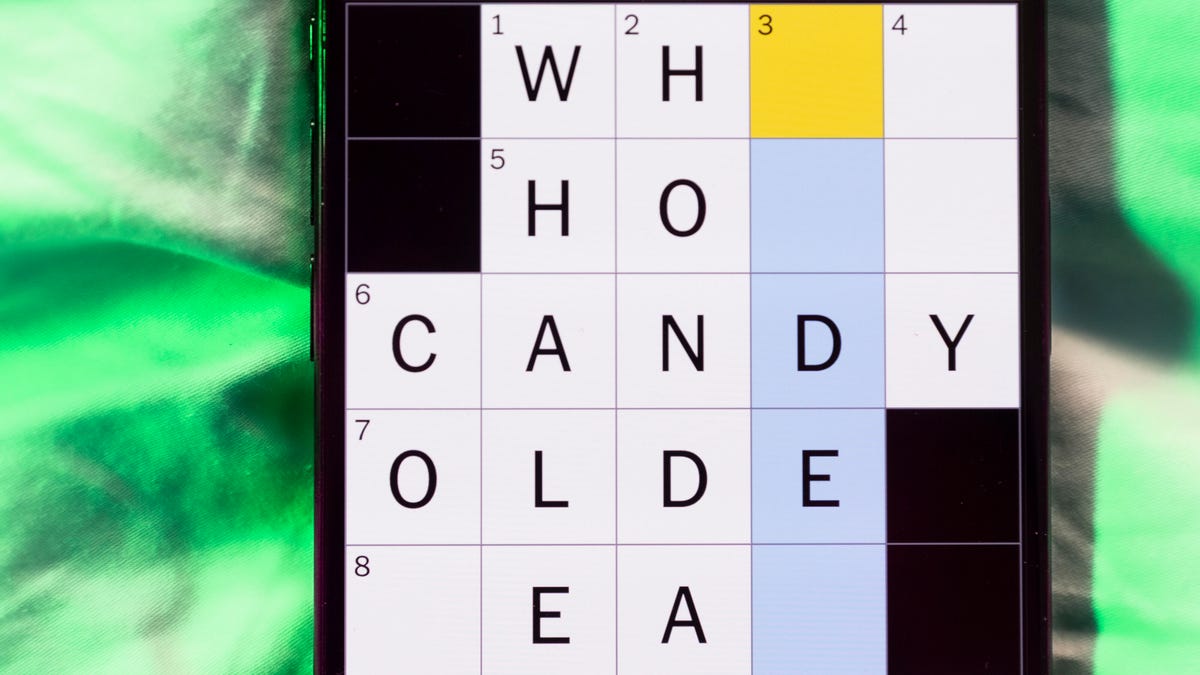
Looking for the most recent Mini Crossword answer? Click here for today’s Mini Crossword hints, as well as our daily answers and hints for The New York Times Wordle, Strands, Connections and Connections: Sports Edition puzzles.
Need some help with today’s Mini Crossword? I found 6-Across to be especially tricky. Read on for all the answers. And if you could use some hints and guidance for daily solving, check out our Mini Crossword tips.
If you’re looking for today’s Wordle, Connections, Connections: Sports Edition and Strands answers, you can visit CNET’s NYT puzzle hints page.
Read more: Tips and Tricks for Solving The New York Times Mini Crossword
Let’s get to those Mini Crossword clues and answers.
Mini across clues and answers
1A clue: Donate
Answer: GIVE
5A clue: Piece of equipment in curling or Quidditch
Answer: BROOM
6A clue: Tidbit of information
Answer: DATUM
7A clue: Prone to daydreaming
Answer: SPACY
8A clue: Athletic shorts fabric
Answer: MESH
Mini down clues and answers
1D clue: Flavor of a purple lollipop
Answer: GRAPE
2D clue: Greek letter I’s
Answer: IOTAS
3D clue: Go to bat (for)
Answer: VOUCH
4D clue: Award with Daytime and Primetime categories
Answer: EMMY
5D clue: Erotic practice in «Fifty Shades of Grey,» for short
Answer: BDSM
Don’t miss any of our unbiased tech content and lab-based reviews. Add CNET as a preferred Google source.
-

 Technologies3 года ago
Technologies3 года agoTech Companies Need to Be Held Accountable for Security, Experts Say
-

 Technologies3 года ago
Technologies3 года agoBest Handheld Game Console in 2023
-

 Technologies3 года ago
Technologies3 года agoTighten Up Your VR Game With the Best Head Straps for Quest 2
-

 Technologies4 года ago
Technologies4 года agoBlack Friday 2021: The best deals on TVs, headphones, kitchenware, and more
-

 Technologies4 года ago
Technologies4 года agoGoogle to require vaccinations as Silicon Valley rethinks return-to-office policies
-

 Technologies4 года ago
Technologies4 года agoVerum, Wickr and Threema: next generation secured messengers
-

 Technologies4 года ago
Technologies4 года agoOlivia Harlan Dekker for Verum Messenger
-

 Technologies4 года ago
Technologies4 года agoiPhone 13 event: How to watch Apple’s big announcement tomorrow


